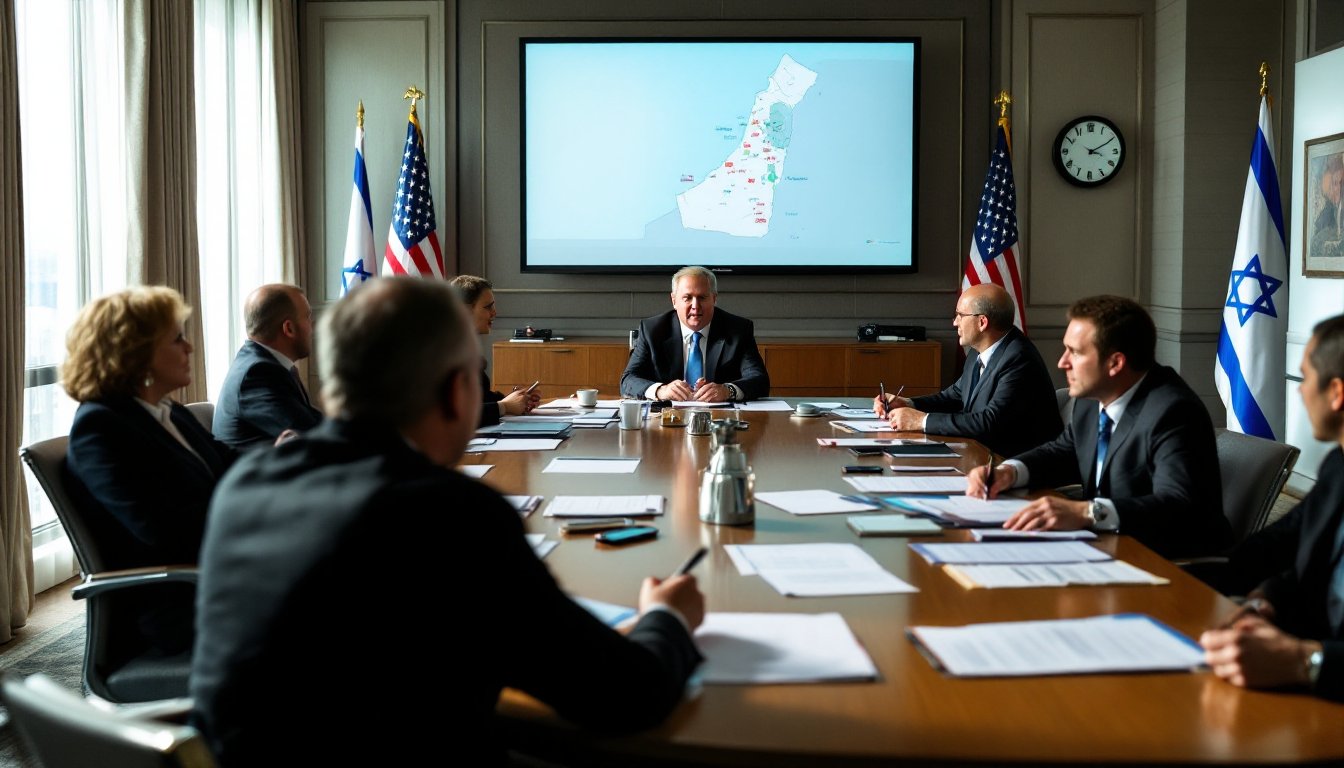Table of Contents
In the backdrop of escalating tensions, Vice President JD Vance undertook a significant journey to Israel, aimed at reinforcing a ceasefire agreement in the Gaza Strip. This visit is part of broader U.S. diplomatic efforts to sustain the fragile peace established on October 10 amidst accusations of violations from both Israeli and Palestinian factions.
Recent events have underscored the volatile nature of the ceasefire, which was intended to halt hostilities and initiate humanitarian aid. Following a series of military strikes that resulted in numerous casualties, the situation remains tense, creating a pressing need for effective mediation.
Diplomatic engagements and ongoing tensions
On the ground, the Trump administration is intensifying its diplomatic maneuvers to stabilize the precarious ceasefire arrangements. Notably, Middle East envoy Steve Witkoff and presidential advisor Jared Kushner have engaged in discussions with high-ranking officials, including Israeli Prime Minister Benjamin Netanyahu.
Their objective is to address early disputes surrounding the terms of the ceasefire and to secure the peace arrangement.
As the situation unfolded, both sides quickly accused one another of breaching the agreement. After an Israeli military response to perceived threats, violence escalated once more, resulting in significant loss of life.
Reports indicated that Israeli airstrikes claimed the lives of 45 individuals in Gaza following allegations of attacks on Israeli forces.
Challenges in implementing the ceasefire
The complexities surrounding the ceasefire are magnified by accusations regarding the treatment of hostages. Israel has voiced concerns that Hamas is withholding the remains of deceased hostages, while Hamas claims that Israeli restrictions hinder their ability to recover the bodies.
This tug-of-war over human remains has become emblematic of the broader challenges facing the ceasefire.
Moreover, the Rafah crossing, a crucial point for humanitarian access and medical evacuations, remains closed, further complicating the situation. The World Health Organization has reported that around 15,000 individuals are awaiting evacuation, showcasing the dire humanitarian needs that persist.
Public sentiment amidst uncertainty
The perception of the ceasefire on the ground varies greatly among the residents of Gaza. Many, like Dalia Zeyad, express skepticism about the effectiveness of the agreement. “It feels like the war is still ongoing, just slightly less intense,” she remarked, highlighting the pervasive fear that continues to grip the population. Residents report ongoing attacks, albeit at reduced frequency, contributing to an atmosphere of anxiety and distrust.
In a further testament to the precariousness of the situation, news emerged of additional fatalities in Gaza, with casualties attributed to sniper and air strikes. The Israel Defense Forces (IDF) maintained that they took action against what they termed “terrorists,” following a claim that their forces were fired upon.
Future discussions and international involvement
During his visit, Vice President Vance is set to engage in discussions with Netanyahu regarding the next steps for the ceasefire, which could involve the introduction of a multinational force to oversee the situation in Gaza. The details surrounding these discussions remain sensitive and are yet to be finalized.
President Donald Trump has reiterated his administration’s commitment to ensuring peace, emphasizing that any aggressive actions by Hamas will be met with a strong response. However, he indicated that the U.S. would not need to deploy troops, asserting that Israel has the capability to act swiftly if necessary.
Recent events have underscored the volatile nature of the ceasefire, which was intended to halt hostilities and initiate humanitarian aid. Following a series of military strikes that resulted in numerous casualties, the situation remains tense, creating a pressing need for effective mediation.0





